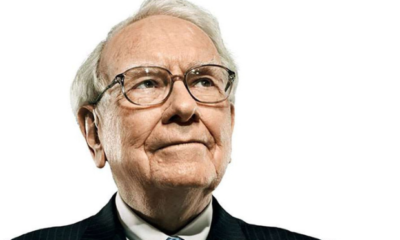Entrepreneurs
How Michael Dell Became a Billionaire
Michael Dell was part of the growth of personal computing in the eighties by creating the Dell computer Corporation which now goes by the name Dell Inc. Dell has progressed to be an investor, an author, a philanthropist and one of the richest people in the world.
Michael Dell’s estimated net worth is $22.4 billion.
Dell has always had the type of mind that likes to pick things apart and find solutions to problems.
These are the skills that made him a billionaire.
Michael Dell’s Early Life
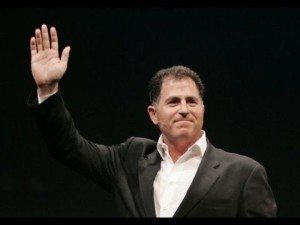 Michael Dell had a strong work ethic from an early age. Aged just twelve, Dell took a job doing the washing up in a local restaurant so he could save up money to build his growing collection of stamps. A few years later, Dell took a summer job selling subscriptions to the Houston Post and it was here where he began to work on his business mind.
Michael Dell had a strong work ethic from an early age. Aged just twelve, Dell took a job doing the washing up in a local restaurant so he could save up money to build his growing collection of stamps. A few years later, Dell took a summer job selling subscriptions to the Houston Post and it was here where he began to work on his business mind.
Selling the subscriptions involved making calls and instead of just mindlessly picking up the phone, Dell analysed his results. He noticed that people who were in the process of building a life in the area were much more likely to buy a subscription. Acting on his findings, Dell collected the details of people in the area who were buying a house or getting married. The result of this inspired action was Dell’s amazing earnings for a high school kid at the time of $18,000!
Michael Dell harboured a growing interest in new technological advances and aged fifteen he bought an Apple computer with the goal of dismantling it to see how it operated.
Dell Computers
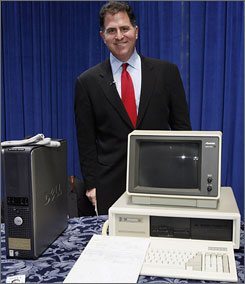 Dell was still a student when he started a small business developing and upgrading personal computers. He eventually became a registered vendor so he could bid on contracts he knew that he would win because he didn’t have the running costs of a computer store.
Dell was still a student when he started a small business developing and upgrading personal computers. He eventually became a registered vendor so he could bid on contracts he knew that he would win because he didn’t have the running costs of a computer store.
At the start of 1984 Dell acted on the idea that a manufacturer selling personal computers directly had many advantages over the retail route that involved middlemen. Dell registered the company PC’s Ltd which was run from a condo, selling $70,000+ worth of PC’s and PC upgrades. In May of the same year Dell was forced to relocate to a bigger premises as well as incorporating the company to become Dell Computer Corporation. Dell employed less than ten people and the capital required to fund the new venture was only $1,000.
It was at the age of twenty seven that Michael Dell became the youngest CEO to feature in Forbes Magazine’s list of top 500 corporations. In 1996 Dell launched the online sales part of his business and soon reached internet sales of $1 million per day! By 2001 Dell had earned the title of the largest creator of personal computers on the planet.
Michael Dell’s Philanthropy
Michael Dell has always believed in giving back and as a result set up the Michael and Susan Dell Foundation with his wife in 1999. The foundation spends time helping city education, children’s hospitals and family economic stability as well as many other charitable causes. By the end of 2009 the foundation had donated more than $650 million to community work and children’s issues in the United States and around the world.
“A bunch of guys sitting around trying to decide what we want to have done with our money after we’re dead, that’s not a very good idea, forget all that. We’re going to do this while we’re still here and get it right.” Michael Dell
The foundation have given more than $65 million worth of grants to medical organizations associated with the University of Texas: The Dell Children’s Medical Centre, The Dell Paediatric Institute and the Michael and Susan Dell Centre for Advancement of Healthy Living. They are also responsible for funding a new Computer Science building at the University’s Austin location.
Recent Challenges
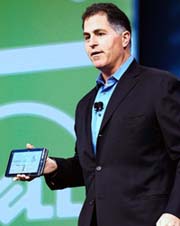 It hasn’t all been plain sailing for Michael Dell and his company in recent years. The company had to front a bill in excess of $300 million to repair faulty machines, which led Dell to lose its badge of honour of being atop of the computer production industry. Not one to shy away from a challenge, Michael Dell returned as CEO in 2007. Results have been mixed but Dell remains persistent.
It hasn’t all been plain sailing for Michael Dell and his company in recent years. The company had to front a bill in excess of $300 million to repair faulty machines, which led Dell to lose its badge of honour of being atop of the computer production industry. Not one to shy away from a challenge, Michael Dell returned as CEO in 2007. Results have been mixed but Dell remains persistent.
In the summer of 2010 Michael Dell encountered more controversy when he settled $100 million worth of charges of accounting fraud. The charges alleged that Dell Computers stated higher than actual earnings which in turn misled investors.
With the typical persistence and positive mindset of any billionaire entrepreneur, Dell took the company private again. He used a private equity firm and Bill Gates‘ Microsoft to launch the buyout of all of Dell’s outstanding shares. This led to what became one of the largest buyouts in recent times with the deal valued at around $24 billion.
It is inspirational how Michael Dell has managed to create this new chapter for his company. Although there are still challenges to face he continues to take progressive action.
“Passion should be the fire that drives your life’s work.” Michael Dell
Michael Dell’s Success Story
Conclusion
Michael Dell has combined innovation, passion, persistence and a focus on solution finding to become a Billionaire. It was a curiosity coupled with hard work that ignited an entrepreneurial fire within Michael Dell a young age, a fire that will never go out.
As this passion continues to grow, Dell uses all of his skills, abilities and mindset to overcome any challenge or controversy and remains committed to making a positive difference in lives less privileged than his own.
From a Condo to the world, the Michael Dell story teaches us that no dream is too big and that any idea that we have can take us further than we could ever imagine as long as we take action on it.
Michael Dell Picture Quote
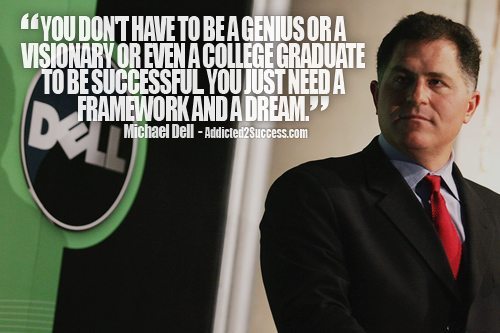
Change Your Mindset
The Silent Skill That Makes People Respect You Instantly
What truly earns respect and why most people go about it the wrong way

Everybody craves respect but not everyone earns it. Some people believe that a title, years of experience, or a position of authority automatically entitles them to respect. (more…)
Entrepreneurs
The Essential Skills Every Entrepreneur Needs In 2026
Success in the digital age isn’t about luck. It’s about mastering the skills that separate dreamers from doers.

When I was 22 years old, I started my first side hustle as a ghostwriter. (more…)
Business
The Hidden Money Pit in Your Operations (and How to Use It)
See how smart asset management software is quietly saving businesses thousands in wasted time, stock, and maintenance.

Trimming unnecessary expenses and minimizing resources is a general practice in running a business effectively. Asset management software can help you achieve those goals. (more…)
Business
Thinking of Buying A Business? These 6 Sectors Quietly Produce the Best Deals
Before you buy your next venture, check out the sectors where successful businesses are changing hands every day.

All entrepreneurs have a desire to be the masters behind a successful venture. Buying an established business is a great choice for many. This provides instant access to an established market with existing infrastructure and clients. (more…)
-

 Business4 weeks ago
Business4 weeks agoWhy Your E-Commerce Fulfilment Is Probably Broken (And How to Fix It)
-

 Shift Your Mindset3 weeks ago
Shift Your Mindset3 weeks ago11 E’s That Define Every Great Leader And Why Most People Miss Them
-

 Did You Know3 weeks ago
Did You Know3 weeks agoThe Success Patterns You Inherited (And Didn’t Notice)
-

 Entrepreneurs2 weeks ago
Entrepreneurs2 weeks agoThe Essential Skills Every Entrepreneur Needs In 2026
-

 Business3 weeks ago
Business3 weeks agoThe Hidden Money Pit in Your Operations (and How to Use It)
-

 Change Your Mindset2 weeks ago
Change Your Mindset2 weeks agoHow to Turn Your Mind Into Your Greatest Asset (Instead of Your Enemy)
-

 Change Your Mindset1 week ago
Change Your Mindset1 week agoThe Silent Skill That Makes People Respect You Instantly
-

 Life6 days ago
Life6 days ago10 Research-Backed Steps to Create Real Change This New Year













